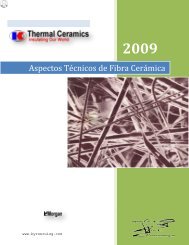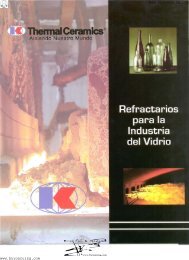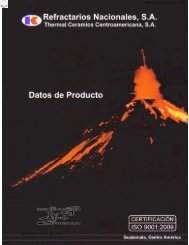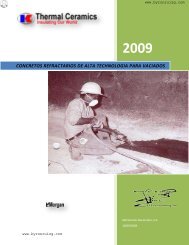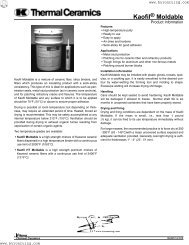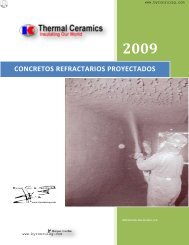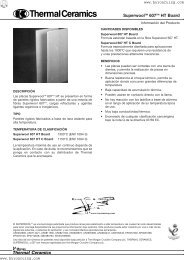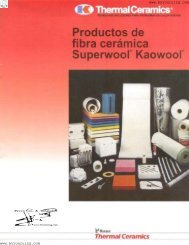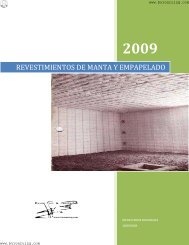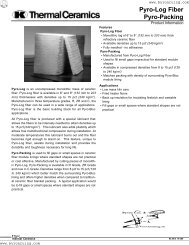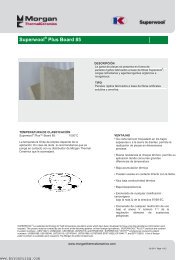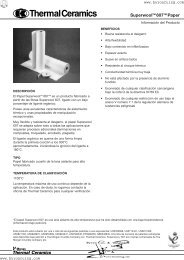Untitled
Untitled
Untitled
Create successful ePaper yourself
Turn your PDF publications into a flip-book with our unique Google optimized e-Paper software.
www.byronruizg.com<br />
www.byronruizg.com<br />
What is melting point and why is it important?<br />
The melting point of Superwool ® Plus blankets (or similar products) is defined as the<br />
temperature when the material exceeds 20% linear shrinkage. At this level of shrinkage<br />
the blanket will have lost virtually all of its thermal insulation properties and will become<br />
liquid with only a relatively small increase in temperature. It is therefore important to<br />
know the temperature of the melting point to ensure that the material is only installed into<br />
appropriate areas where the melting point will not be exceeded.<br />
Testing methods (ASTM C-201 and EN 1094-1)<br />
For test methods measuring the properties of high temperature insulation wools (HTIW),<br />
the European standard EN 1094-1 (2008) is used for the test methods where appropriate.<br />
Superwool ® Plus data sheets refer to measurements such as tensile strength, permanent<br />
linear change and temperature classification. These characterisations are made according<br />
to the test methods given in this standard. However there are several test procedures for<br />
HTIW products which are currently in development and will not be included into the EN<br />
1094-1 standard until they have been ratified.<br />
Some tests, such as thermal conductivity and leachable chloride use the ASTM methods.<br />
In particular the thermal conductivity test uses the methods based on the ASTM C-201<br />
equipment as it is believed that this gives the most accurate data for high temperature<br />
insulation. The thermal conductivity method given in the draft European Standard EN<br />
1094-1 has been withdrawn as it was was inaccurate and so was not included in the<br />
current standard.<br />
Back to Basics<br />
Typical use temperature range<br />
Superwool ®<br />
Plus Blanket<br />
Superwool ®<br />
607 ® Blanket<br />
Superwool ®<br />
607 ® HT ® blanket<br />
Cerablanket<br />
Temperature (°) 0 - 500<br />
650<br />
800<br />
950<br />
1100<br />
1250<br />
1400<br />
Typical continuous use temperature, low shrinkage<br />
31<br />
Short term exposure temperature zone, increasing shrinkage<br />
Classification temperature<br />
Zone of non utilisation



